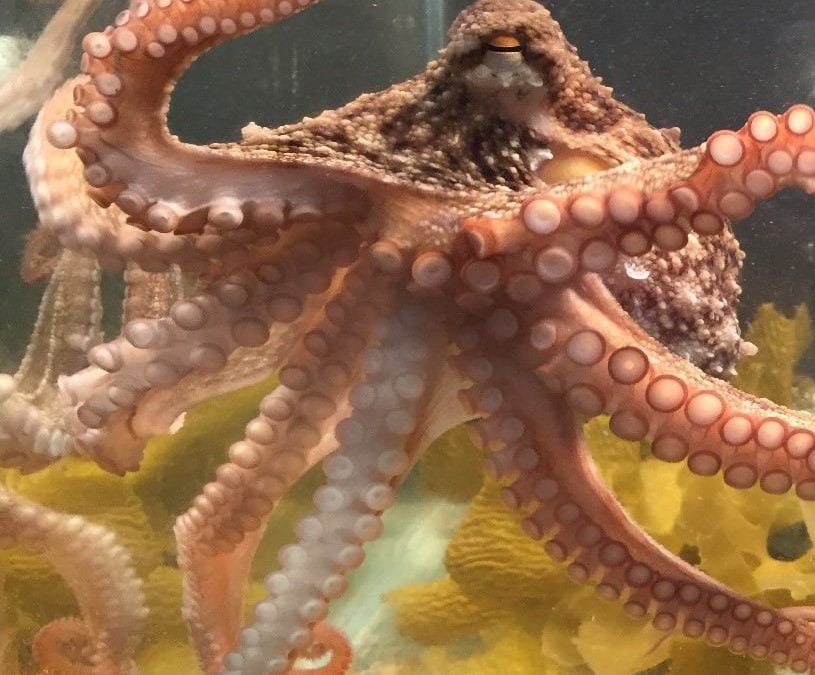Octopuses use their highly developed sense of vision to hunt, navigate, and communicate with others, even in turbid waters or under low light conditions. They are sensitive to polarised light, further enhancing their great sense of vision. Octopuses also possess an extraordinary ability to camouflage themselves, allowing them to hide in almost every environment. This is achieved by expanding and contracting different coloured chromatophores – pigment-filled sacs – in their skin. Each individual chromatophore is neurally controlled, meaning that octopuses have almost endless possibilities when it comes to changing their appearance, and can do it almost instantly. However, according to studies of the eye, octopuses are colour-blind. Thus, how they change the patterns on their skin to blend into their environment is not fully understood.
Luis Nahmad works with Dr Misha Vorobyev at the Institute of Marine Science’s Leigh Marine Laboratory studying octopus vision and behaviour. Their research includes measuring octopus visual acuity and polarisation vision to better understand how octopuses see the world around them. By analysing how an octopus looks in the eyes of their predators they can see how effective their camouflage is and what are its limitations. They also do experiments to understand some processes behind octopus camouflage and to determine if they actually match the colour of the background despite being colour-blind.
